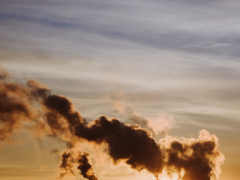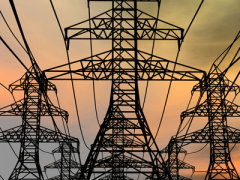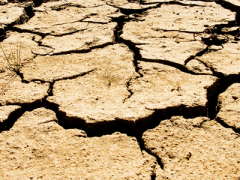Subsidence of peatlands leads to high costs
In the Netherlands, the cost for society of land subsidence occurring in peatlands amounts to billions of euros. In urban areas the weak surface subsides under a physical load; up to 2050, the cost of repairing damage to the infrastructure and frequent maintenance may be as high as € 5.2 billion. In rural areas these costs are considerably lower. A directed policy adopted now may avoid rising costs for the public administration and the individual citizen in the future. PBL Netherlands Environmental Assessment Agency reaches this conclusion in its study Dalende bodems, stijgende kosten (Subsiding soils, rising costs).
Proactive rather than reactive
Consolidation (compression of the soil) is caused by loads such as houses and roads; in built-up environments in particular, this is something to be taken into account. In places where this has been done inadequately in the past – specifically old dwellings and historic city centres – damage has already been sustained and choices must be made with regard to restoration. In new developments, future damage can be prevented by choosing the right location and construction methods and technology.
A proactive policy geared towards long-term damage prevention is more effective than a reactive policy which focuses on the short term and damage repair. For existing urban areas, the question is who is going to cover the restoration costs. Municipalities, businesses and homeowners will have to make a joint effort to deal with this issue.
Problems caused by lowering the water table
In rural areas, subsidence of peatlands is mainly caused by lowered water tables. According to PBL, this too involves extra costs related to restoration of infrastructure and homes with poor foundations. In addition, lowering the water table leads to CO2 emissions and the deterioration of nature where areas run dry.
PBL reports that over a 40-year period, subsidence in peatland pastures carries a water management cost of around 200 million euros. These expenses are mostly covered by the water boards.
Less subsidence, less CO2 emissions
Gradual rewetting and subsurface irrigation by submerged drains are measures which slow down peatland subsidence in rural areas. A change in land use from agriculture as practiced today to nature areas or agriculture suited to undrained soils can stop the subsidence. These measures lead to lower CO2 emissions because peat oxidation is slowed down.
The application of subsurface irrigation may result in a yearly emission reduction of 0.9 million tons of CO2 which is about a quarter of the current emissions from peatland meadows. Gradual rewetting, however, leads to lower crop yields and therefore lower income for farmers.
The decentral authorities and the state need to make a move
To ensure the cost of land subsidence remains manageable in the long term (2050), investment is required in research and innovative measures in the fields of spatial planning, road construction, housing developments and water management. In areas where peatland subsidence occurs, the provinces, water boards and municipalities play an important role in tackling the problem in close cooperation with the residents and other parties. The state can play a part in the development of the required funding instruments. The involvement of the national government also remains important for wider issues, such as land subsidence in rural areas. After all, the state is also responsible for system management in the field of (international) climate and nature policy.
Approximately 9% of Dutch territory is composed of peat soils. The water lowering board drains these soils for the sake of agriculture, thereby continually the water table. If this policy is maintained, the drained peatland will continue to subside. In built-up areas, subsidence is the consequence of consolidation, the compression of the soil. More than ever before, decentral authorities and provinces are facing the effects of subsidence. This PBL study provides insight into the effects of subsidence and provides, in a transparent way, a good picture of possible measures for both rural and urban areas.




